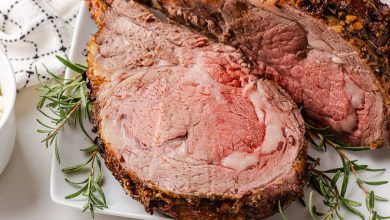Bologna (Pork, Turkey, Beef)
Description:
Bologna is a type of highly seasoned sausage made from finely ground pork, turkey, and beef. It is commonly enjoyed in sandwiches, served in cold cuts, or as part of various savory dishes. Bologna’s rich and savory flavor is a staple in many kitchens, offering both a versatile and convenient ingredient for a wide range of meals.
Nutritional Information (per 100g):
| Nutrient | Amount |
|---|---|
| Energy | 336.0 kcal |
| Protein | 11.56 g |
| Total Fat | 29.25 g |
| Saturated Fat | 11.7 g |
| Carbohydrates | 6.66 g |
| Dietary Fiber | 0.0 g |
| Sugars | 1.35 g |
| Calcium | 31.0 mg |
| Iron | 1.2 mg |
| Magnesium | 14.0 mg |
| Phosphorus | 128.0 mg |
| Potassium | 222.0 mg |
| Sodium | 1055.0 mg |
| Zinc | 2.22 mg |
| Copper | 0.093 mcg |
| Manganese | 0.265 mg |
| Selenium | 12.4 mcg |
| Vitamin C | 11.0 mg |
| Thiamine (B1) | 0.152 mg |
| Riboflavin (B2) | 0.15 mg |
| Niacin (B3) | 3.31 mg |
| Vitamin B6 | 0.388 mg |
| Folate | 4.0 mcg |
| Vitamin B12 | 1.08 mcg |
| Vitamin A | 0.0 mcg |
| Vitamin E | 0.0 mg |
| Vitamin D2 | 0.0 mcg |
Allergen Information:
Bologna may contain allergens such as pork, beef, turkey, and sometimes additional seasonings or preservatives. People with sensitivities to these meats or preservatives should be cautious when consuming bologna. Always check packaging for specific allergen information.
Dietary Preferences:
- Not Suitable for Vegetarians or Vegans due to the presence of animal proteins.
- Gluten-Free: Typically, bologna does not contain gluten; however, check for specific brand variations that may include gluten-based additives.
- Low in Carbs: This makes bologna a suitable choice for low-carb or ketogenic diets.
- High Sodium: Due to the processing, bologna is high in sodium, which may be a consideration for those on sodium-restricted diets.
Cooking & Serving Advice:
Bologna is often eaten cold, but it can also be pan-fried or grilled for a crispy texture. Its rich, savory taste pairs well with mustard, pickles, and cheese, making it ideal for sandwiches or as part of a charcuterie board. For a unique twist, try adding bologna to salads, wraps, or omelets. Given its high fat and sodium content, it’s best enjoyed in moderation as part of a balanced diet.
Conclusion:
Bologna offers a convenient, flavorful protein option that’s beloved in many homes for its versatility and hearty taste. However, due to its high fat, sodium, and low fiber content, it’s important to be mindful of portion sizes. Whether you’re creating a classic sandwich or experimenting with new recipes, bologna remains a quick, satisfying ingredient for everyday meals.










